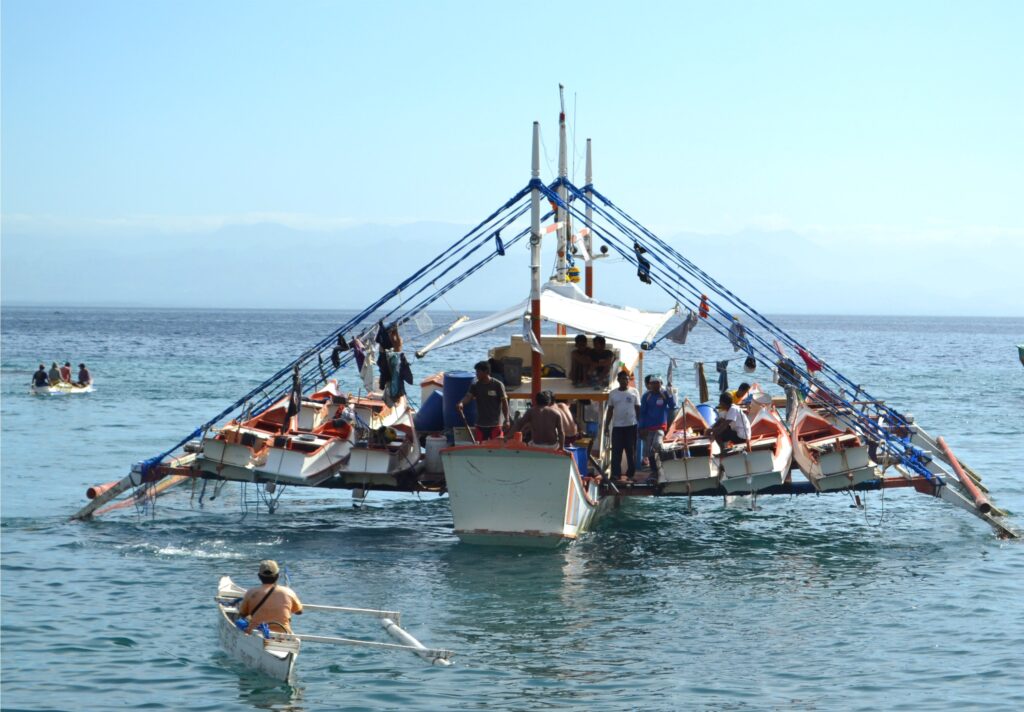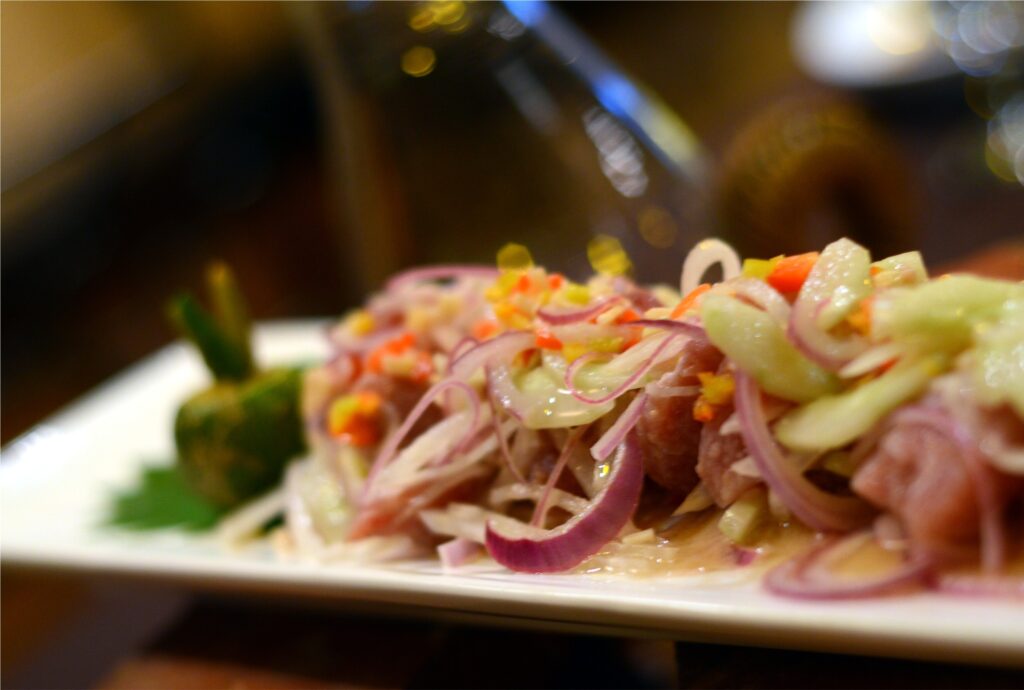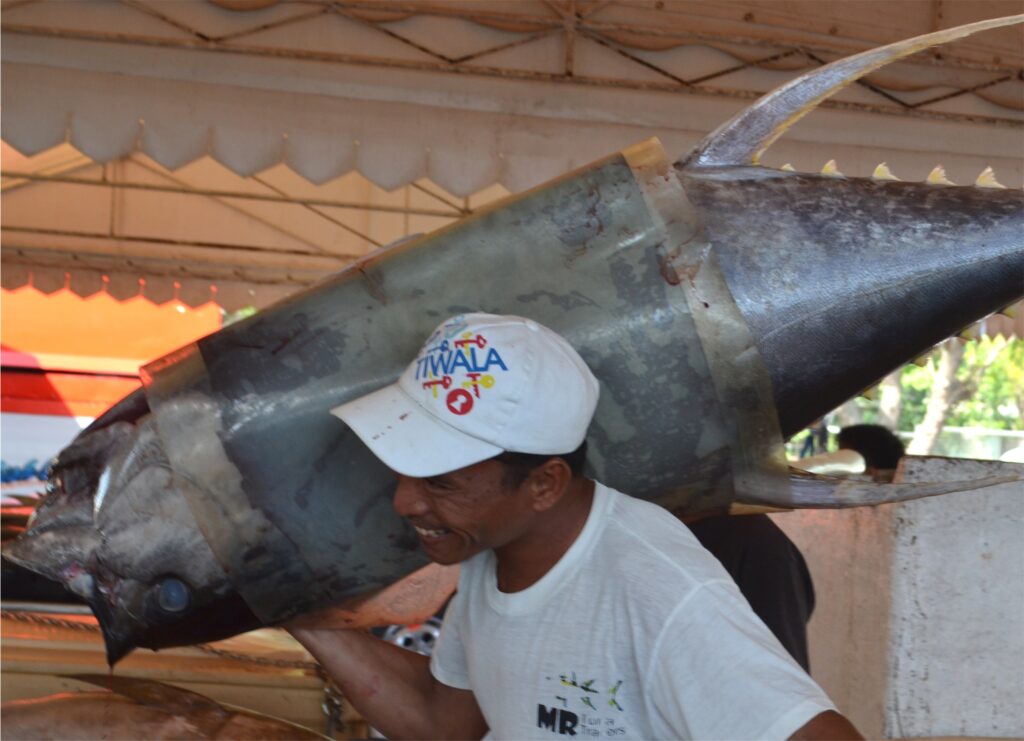TUNA: THE “CHICKEN OF THE SEA”
Text and Photos by Henrylito D. Tacio
Tuna is called the “chicken of the sea” for obvious reasons. It may not look like a chicken but tuna can be prepared in several ways just like chicken. In fact, it can be served raw – think of fresh kinilaw.
The Philippines is among the world’s largest producers of tuna and tuna-like species, according to the Food and Agriculture Organization (FAO) of the United Nations. In fact, almost half of its seafood exports are tuna products (fresh tuna, frozen tuna, poached tuna, and canned tuna).

“Tuna is by far the largest seafood export commodity of the Philippines in terms of value and offers a livelihood to thousands of fishermen,” noted the website, seafood-tip.com.
“Catching tuna is a lucrative industry, generating US$42 billion per year, and provides thousands of jobs in the catching, processing, and trading sector worldwide,” pointed out Ephraim Batungbacal, regional oceans research coordinator for Greenpeace Southeast Asia.
Tunas – which eat smaller fish, like mackerel, sardines, and anchovies — are migratory oceanic fishes, which are capable of attaining large sizes. It also includes tuna-like species such as billfish, swordfish, and marlin.
The International Seafood Sustainability Foundation, which compiled a detailed scientific report on the state of global tuna stocks, reports: “Tunas are widely but sparsely distributed throughout the oceans of the world, generally in tropical and temperate waters between about 45 degrees north and south of the equator.”
The western and central portions of the Pacific Oceans of the Food and Agriculture Organization (FAO) Statistical Area 71 contain the biggest tuna resources among the world’s oceans. The Philippines straddles FAO Area 71 in which half of the world’s yellowfin tuna is harvested.

In the Philippines, twenty-one species have been recorded. “But only six species are commercially important,” says Dr. Rafael D. Guerrero III, former executive director of Philippine Council for Aquatic and Marine Research and Development (PCAMRD). He is now an academician at the National Academy of Science and Technology.
Among the shallow-water/small tunas, the most commercially important are the frigate tuna or “tulingan” (Auxis thazard), the eastern little tuna or “kawa-kawa” (Euthynnus affinis), and the bullet tuna (Auxis rochei). Most of these tunas are consumed locally.
The important species among the deep-water/big tunas are the yellowfin tuna or “albacora” (Thunnus albacores), the big-eye tuna or “tambakol” (Thunnus obesus), and the skipjack or “gulyasan” (Katsuwonus petamis). These are caught using commercial fishing boats with purse seines and ring nets. Small fishermen catch these species using handlines (hook and line).
According to the FAO, the tuna industry is centered around General Santos City, touted to be the “tuna capital of the Philippines.” The tuna boom was spurred by the arrival, in the mid-1970s, of Japanese traders looking for new supplies of sashimi-grade yellowfin tuna.

“The Philippines is best known for its high quality, fresh yellowfin tuna and is at the moment at the biggest supplier of fresh yellowfin tuna to the European Union,” seafood-tip.com states.
In 2010, the Philippines shipped 106,449 metric tons of prime-grade yellowfin, big-eye, skipjack, and other varieties of tuna to the United States, United Kingdom, and Germany, according to a report from the Worldwide Fund for Nature (WWF).
But the tuna export industry is in trouble. “Many of the country’s tuna fisheries are severely overfished,” the WWF deplored.
In 2013, seafoodsource.com reported that the volume of yellowfin tuna landed at General Santos City was “getting few year-on-year.” Quoting data from the Philippine Fisheries Development Authority, it said that the yellowfin tuna landing in the first quarter of that year was only 505 metric tons. The previous year, the volume was 528 metric tons.
“Tunas are caught throughout Philippine waters,” says Dr. Guerrero, “but the most productive fishing grounds are the Sulu Sea, Moro Gulf, and waters extending to the North Celebes Sea. Viable tuna fisheries also exist in waters off Western Negros, as well as Northwestern and Southern Luzon.”
Deep-water or oceanic tunas are believed to be breeding in the Moro Gulf when 3-4 years of age. The juveniles (less than l-year-old) stay in shallow waters (inshore) until they swim out to the West Pacific or the Indian Ocean depending on the current. This is the reason why the big tunas are called “fishes without a country.” They have also been referred to as migratory or straddling stocks.
“The Philippines is in a strategic position because of its proximity to offshore fishing grounds,” says Dr. Guerrero, referring to the West Pacific. “It also has an established tuna canning industry and skilled fishermen.”
The FAD (Fish Aggregating Device) locally known as payao is “the most important factor that triggered the phenomenal growth of the tuna fishing industry,” says a position paper published by PCAMRD. “The tuna fisheries became the largest and most valuable fisheries in the Philippines during the mid-1970s when payao was introduced.”

On payao, Dr. Guerrero explains: “The device is a floating structure made of bamboo and coconut fronds that is anchored to the bottom. It attracts small fishes that tunas feed on. Fishing boats encircle the structures with their nets to catch them.”
As a result of payao, the annual tuna production has increased substantially from less than 10,000 tons in 1970 to about 300,000 tons in the 1990s. During 2003, tuna production was 483,314 tons or 24.8 percent of total Philippine capture fisheries production.
It was just a matter of time that overfishing became a problem. “The Philippine fishing fleet consists of 98% out of small vessels operating close to shore and only 2% are commercial vessels operating in commercial waters and high seas,” seafood-tip.com reported.
“The tuna fishery employs a variety of gear to catch different species,” the website added. “Skipjack tuna are mostly targeted by purse seine vessels to supply cannery operations, while yellowfin tuna and bigeye tuna are the main target species for the handline and longline fisheries that focus on fresh and frozen products.”
According to the website, “the purse seine and longline fleets are centered around the southern province of Mindanao while hardliners are active throughout all major fishing grounds in the country.”
Tuna is popular among humans because it does not have a strong fishy flavor, and consumers who do not like fish will often eat tuna. Another thing: tuna is a good source of protein, vitamins, minerals, and omega-3 fatty acids. Several studies have found that omega-3 fatty acids can lower the risk of heart disease, improve the immune system, cure varied inflammatory conditions, ease the pain caused by arthritis, and help normalize blood pressure and cholesterol levels.
The popularity of tuna among industrialized countries has made tuna to be overfished in countries where it is usually caught. The big demand for Japanese sushi in the western world is putting pressure on tuna populations which turns them into endangered species.

